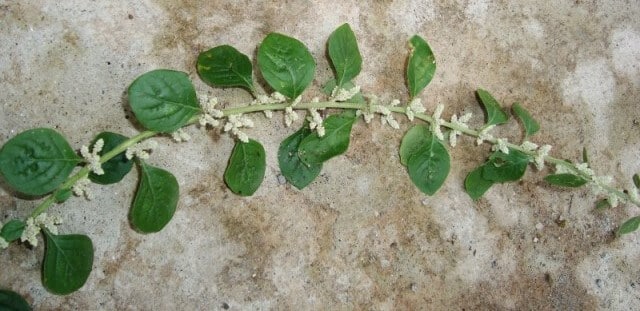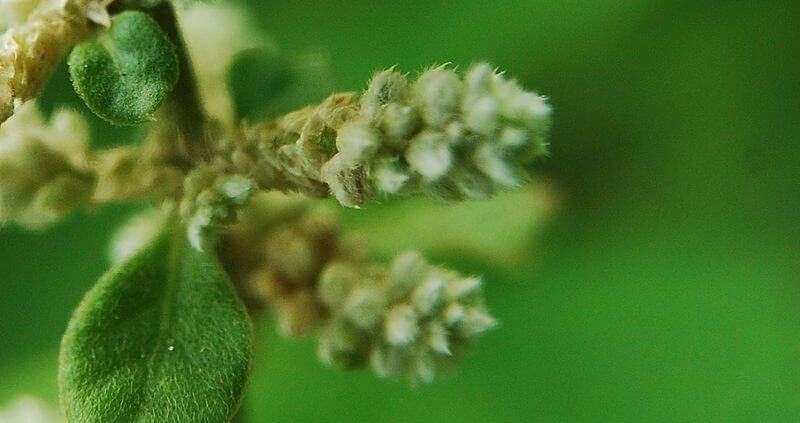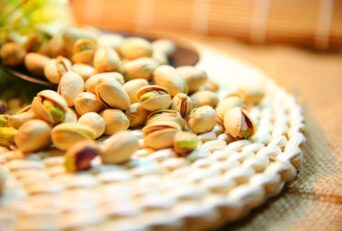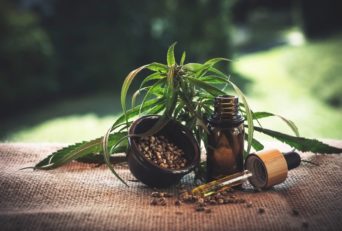Aerva Lanata is a perennial and annual herb, commonly known as Mountain Knot Grass. It comes from the family of Amaranthaceae. It is abundantly seen and originated in India. It is mostly found in Asia, Africa, and Australia. It grows all over the year on plain lands.
This is called as Astana Bayda in Sanskrit. It has different names in different languages. It has names like Chaya, Pashanabheda, Akopinole, Aadaanpaaki, Pulai, Konda, Cherula etc. It has a botanical name called Aerva Lanata Juss.
Aerva Lanata has a woody root structure and also flowers once a year, sometimes twice. The plant has small and simple leaves which are 1.3-3.5 cm long and 0.8-2.5 cm wide, shiny white and red at the base and has two lobes. The stems of Aerva Lanata spread in large areas irregularly which are about 1.8 m long.
The flowers are tiny about 2.5 mm long with green, pink or creamy white color and grow in clusters near the axis of stems. Aerva Lanata flowers during may and October. Aerva Lanata is rarely pollinated by insects as there is no honey or fragrance. It is self-pollinated.
The dried flowers are named as Boor or Boikallan and sold. It is one of the prominent ten sacred flowers of Kerala, named Dasapushpam.
Fruits of this plant are small and egg-shaped. Fruits have black seeds which are bean-shaped. Roots of Aerva Lanata smell like camphor. Aerva Lanata grows in the tropical climate and grows up to 60 cm. It has a bitter taste.
Table of Contents
Nutritional Value
For 100 grams,
- Carbohydrates: 26.6 g
- Crude Protein: 22.6 g
- Ash: 31.2 g
- Minerals: Potassium, Zinc, Iron, Manganese, Calcium, Magnesium
Chemical Constituents Of Aerva Lanata
- Alkaloids
- Tannins
- Flavonoids
- Palmitic acid
- Coumestrol
- Beta Sitosterol
Uses Of Aerva Lanata
All parts of the plant have different uses including the roots.
- It considered as an edible plant, is used as food for humans and also animals.
- Leaves of the plant can be used to make soup or can be eaten as leafy vegetables.
- The plant can be provided as fodder for stock and chickens.
- The plant is used as a lucky charm against evil spirits, well-being for widows and believed to be good luck for hunters.
Aerva Lanata Medicinal Uses
- Aerva Lanata is antimicrobial. What it helps is fighting against pathogens. It protects both the skin and the body from pathogens.
- This herb is diuretic which helps in promoting the production of urine, effective in urethral problems, lithiasis, and gonorrhea.
- Aerva Lanata acts as a demulcent which helps in getting relief from pain and inflammation.
- Aerva Lanata is anthelmintic which helps in destroying parasitic worms and reducing sores and injuries on the skin.
- Aerva Lanata acts as an astringent thereby helping in reducing bleeding in piles. It is also used as a treatment for diarrhea and hemorrhages.
- Aerva Lanata stem acts as an antioxidant which helps in balancing the free radicals.
- Aerva Lanata is lithontriptic and antilithic which gives the plant the power to destroy stones in kidneys and bladder.
- It behaves as a medicinal tonic.
- This is also known for increasing memory power.
This herb is also used to treat a headache, abdomen and digestion problems. It is effective for neck and back pain, fever, urine problems and also regulates body metabolism.
It is considered to be effective for hepatitis and inflammation of the liver. It is a good remedy for strangury, i.e., the condition of painful or frequent urination.
Aerva Lanata is also used for the treatment of many health problems like Anemia, Alzheimer, Arthritis, Cholesterol, lung problems, bone problems and also blood circulation.
Ayurvedic Value Of Aerva Lanata

You know Aerva Lanata is believed to be a best natural medicine for Kidney stones?
It also has numerous medicinal benefits for different purposes. Aerva Lanata is used in Ayurveda for many treatments, and all of its parts are also used in pharmaceutical drugs. Use of Aerva Lanata has been recommended by Siddha and Ayurveda.
- The decoction of the plant can dissolve kidney stones in a few days, which is scientifically proven. It is also a good remedy for bladder stones. Aerva Lanata flowers are also used for this purpose.
- It is used as a treatment for gonorrhea.
- The roots of this herb is used for the treatment of snake bite.
- The decoction of root and flowers gives relief from a headache.
- The decoction of the root is also used as a tonic during pregnancy.
- Roots of this herb are effective as demulcents.
- Juice obtained from the leaves of this plant is used as a remedy for painful urination and kidney stones. Advised to be taken in small quantities.
- The decoction of the leaves of this herb is used to treat a sore throat by gargling and also used against guinea-worm.
- When infants are affected by malaria, decoction of leaves is used to bath. The smoke of the burning plant is also used for this purpose.
- Ash obtained by burning the leaves of Aerva Lanata, after removing impurities when rubbed on the lower back gives relief from back pain.
- Fresh leaves of this herb are taken and crushed to apply on injuries or wounds, as it cures inflammation and reduces pain.
- Leaves of this plant are powdered and used as a medicine for Diabetics. The powder can be stored and taken two times a day. It helps in controlling the sugar level in blood.
- Leaf-sap is used for eye problems.
- Infusion of this herb is used to treat Diarrhea, Inflammation and also can be used during Childbirth.






